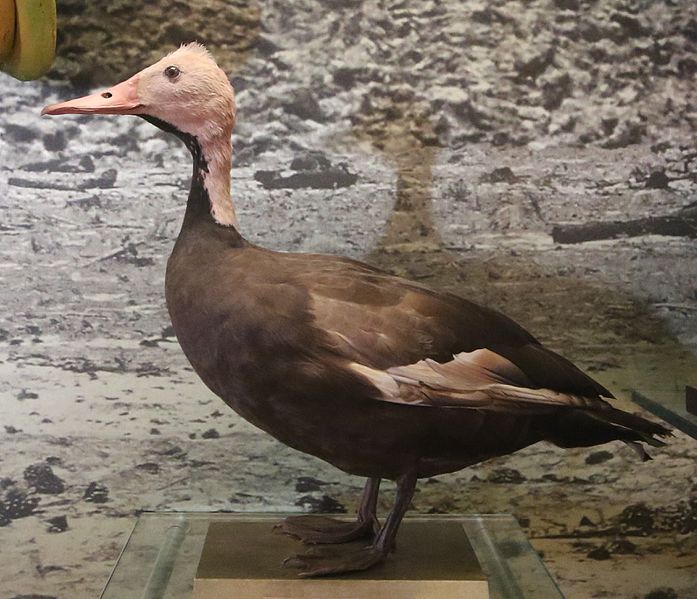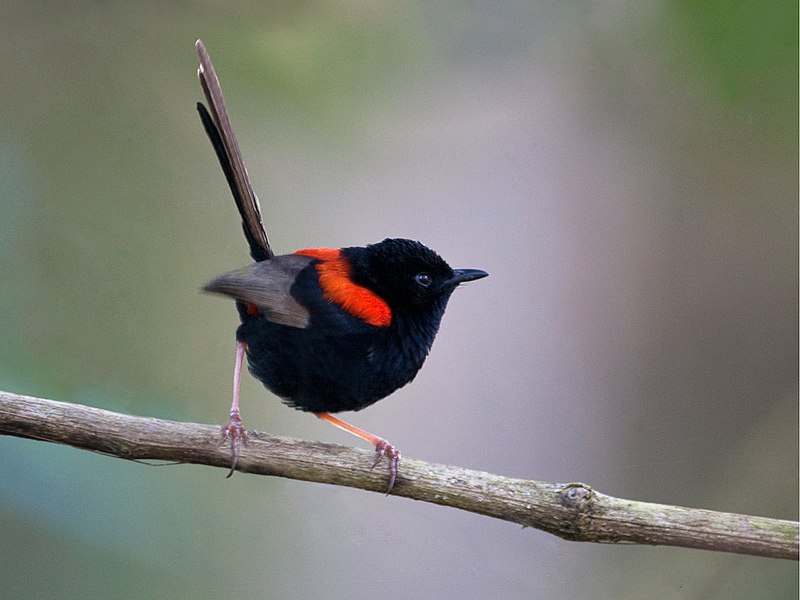 |
| Cover image for the "My Little Raptormaniacs" storyline. |
Enough about me, you're more likely here for the new maniraptor discoveries. In January, eggshell previously attributed to Genyornis was reinterpreted as belonging to Progura. Quill pits were reported from an Eocene penguin. The genome of the great tit was sequenced. Carotenoid-based feather coloration was found in pink-headed ducks. Great reed warblers were suggested to sing outside of the breeding season to practice their songs. Forty-spotted pardalotes were found to stimulate manna production in eucalyptus trees for feeding. New studies came out on body mass of dodos, the cranial biomechanics of moa, the kicking strike of secretary birds, vocal learning in zebra finches, and the evolution of bill length in 'amakihi, melanin-based coloration system in birds, and chromosomes in white-throated sparrows. Newly-named maniraptors included the non-ornithothoracine avialan Chongmingia zhengi, the Eocene stem-falcon Antarctoboenus carlinii, the enantiornithine Linyiornis amoena, the Cretaceous euornithines Dingavis longimaxilla (which I find suspiciously similar to Juehuaornis) and "Bellulia" rectusunguis (with its genus preoccupied, it would receive a new name later in the year), and the Himalayan forest thrush (Zoothera salimalii).
 |
| Mounted specimen of a pink-headed duck, photographed by "Geni", licensed. |
In February, duetting in red-backed fairy wrens was found to deter cuckoldry (among themselves, not among their listeners...). Evidence for a theory of mind in common ravens was presented. A specimen of Hesperornis was found with injuries attributed to a plesiosaur attack. New specimens of Archaeorhynchus and Chambicuculus were described. "Furculae" assigned to Dakotaraptor were reinterpreted as turtle entoplastra. New studies came out on the development of fibular reduction in birds, the endocranial anatomy of dodos, the evolution of sexually dimorphic tail feathers, the feather structure of Humboldt penguins, and sound recognition in European starlings. Newly-named maniraptors included the presbyornithid Wilaru prideauxi, the dromornithid Dromornis murrayi, and a bizarre possible maniraptor of uncertain placement, Fukuivenator paradoxus.
 |
| Red-backed fairy wren, photographed by Greg Miles, licensed. |
In March, brown skuas were reported to be capable of recognizing individual humans. Compositional syntax was found in the calls of great tits. The bill morphology of New Caledonian crows was shown to facilitate tool use. Vocal learning was discovered in red-backed fairy wren embryos. New studies came out on the evolution of color in island birds, the development of feathered feet in domestic chickens and pigeons, the migratory biology of ruby-throated hummingbirds, the vision of small passerines, the morphology of dodos, the mandibular anatomy of Segnosaurus, the tarsometatarsal anatomy of ostriches, the mechanics of sound production in the wings of Smithornis broadbills, and the phylogenetic position of Sylviornis. Newly-named maniraptors included the Cretaceous euornithines Hesperornis lumgairi and Changzuiornis ahgmi, the Eocene apodiform Cypseloramphus dimidius, and an Eocene bird of uncertain placement, Lapillavis incubarens.
 |
| Skeletal reconstruction of Sylviornis, from Worthy et al. (2016). |
In April, island birds were found to predictably evolve decreased flying ability. Golden-collared manakins and red-capped manakins were discovered to use superfast forelimb muscle contractions during social displays. Vocal mimicry in female superb lyrebirds was reported. The reproductive biology of the sapayoa was described. A new enantiornithine specimen was found to have fish remains as gut contents. New studies came out on the rates of morphological evolution in Early Cretaceous birds, the effect of diet on avian evolution, the taxonomy of geranoidids from the Willwood Formation, the migration strategies of pied flycatchers, brain activity during flight in European starlings, self-regulation in corvids, dental disparity in paravians prior to the K-Pg, the genetic basis for beak size in Darwin's finches, the history of Australian penguins, the biomechanics of courtship displays in Indian peafowl, the evolution of skull shape in raptorial birds, and the ontogeny of limb kinematics in chukars. Newly-named maniraptors included the oviraptorosaur Apatoraptor pennatus and the plotopterids Klallamornis abyssa and Olympidytes thieli.
.jpg/400px-Red-capped_Manakin_-_Rio_Tigre_-_Costa_Rica_MG_8090_(26651295756).jpg) |
| Red-capped manakin, photographed by Francesco Veronesi, licensed. |
In May, the genetic basis for red coloration in birds was described. Research on the phylogeography of the vermilion flycatcher species complex resulted in the recently-extinct San Cristóbal vermilion flycatcher being declared a distinct species. The bill of southern yellow-billed hornbills was found to function in thermoregulation. Hybridization in geese was reviewed. New studies came out on the phylogeny of geese, the structural mechanics of the feather vane, polymorphism in black sparrowhawks, the pelvic limb musculature of ostriches, the evolution of bone-associated genes in birds, duetting displays in magpie larks, and the shape recognition in African gray parrots.
 |
| Diagram showing that the enzyme CYP2J19 converts yellow carotenoids to red carotenoids in birds, from Lopes et al. (2016). |
In June, wings of juvenile enantiornithines were found preserved in amber. Sexual dimorphism was found in Dromornis stirtoni. Birds were discovered to have higher neuronal density in their forebrains than mammals. Budgerigars and zebra finches were reported to learn grammatical structure in different ways. New studies came out on cognitive development in kaka, the function of nocturnal song in field sparrows, the genetic bases of beards and muffs in chickens, the vascular anatomy of bird heads, the evolution of communal signaling in birds, the chemistry of Troodon tooth enamel, and the osteology of Bathornis. Newly-named maniraptors included the lithornithid Calciavis grandei. "Bellulia" rectusunguis was given the new genus Bellulornis.
 |
| Wing of juvenile enantiornithine preserved in amber, from Xing et al. (2016). |
In July, great frigatebirds were found to track atmospheric conditions during transoceanic flights. Feather keratin was suggested to be durable enough to be potentially fossilized. The capacity for flapping-based locomotion in Mesozoic paravians was evaluated. New Caledonian crows were reported to use tools for carrying objects. Relational concept learning was demonstrated in ducklings. New studies came out on the consumption of blister beetles by male great bustards, the preservation of avian fossils, visual pigments in emus, interspecies communication between greater honeyguides and humans, visual guidance of flight in hummingbirds, genomic variation in Darwin's finches, and the evolution of ultraviolet vision, closed-mouth vocalizations, skull morphology, and locomotion in birds. Newly-named avialans included the Pleistocene cuckoos Centropus bairdi and Centropus maximus and the Miocene gypaetine vulture Mioneophron longirostris.
In August, tool-bending behavior was found to be common in New Caledonian crows. Great frigatebirds were confirmed to sleep in flight. Barbados bullfinches and Carib grackles were discovered to be capable of passing the string-pulling test. The evolution of avian reproduction was reviewed. Zebra finches were found to sing to their unhatched chicks to prepare them for hot weather. New studies came out on the phylogenetic position of the laughing owl, the timing of the crown-penguin radiation, genomic variation in the yellow-rumped warbler species complex, and the diversification of kiwis and passerines. Birds of Stone by Luis Chiappe and Meng Qingjin was published and my review of it can be found here.
 |
| Great frigatebird, photographed by "Aviceda", licensed. |
In September, pigeons were found to be able to distinguish words from non-words. They were also found to prefer informative over non-informative options and to ignore misinformed leaders. The development of feathers was reviewed. Tool use was reported in Hawaiian crows. Melanin in feathers was elementally characterized. A hard polytomy was argued to be present at the root of Neoaves. Pellets possibly produced by Eocene owls were described. European blackbirds were discovered to switch abruptly to nocturnal flight during migration. New studies came out on the phylogeny of New World vultures, the function of nasal conchae in turkeys, non-vocal signaling during courtship displays in blue-capped cordon bleus, song complexity in pied butcherbirds, the genetic bases for vision in raptorial birds, the morphology of tracheal and esophageal displacement in birds, the development of the grasping foot in birds, and the dentitions of Hesperornis and Ichthyornis. Newly-named maniraptors included the Eocene stem-roller Septencoracias morsensis, the Dahomey forest robin (Stiphrornis dahomeyensis), the Ghana forest robin (Stiphrornis inexpectatus), and the Rudder's forest robin (Stiphrornis rudderi).
 |
| Hawaiian crow using stick as probing tool, from Rutz et al. (2016). |
In October, red flight feathers in yellow-shafted flickers was found to be caused by diet rather than by hybridization with red-shafted flickers. A preserved syrinx was reported from a specimen of Vegavis. A bonebed of Avimimus was described at last after having been rumored at conferences for many years. Evidence was presented in favor of treating the hen harrier and northern harrier as distinct species. A parrot fossil was reported from the Miocene of Russia. Common swifts were discovered to spend ten months in the air annually. Migratory life histories were found to explain the extreme size dimorphism in Eudyptes penguin eggs. New studies came out on altruism in azure-winged magpies, the relationships between flight style and avian wing aerodynamics, the timing of the columbiform radiation, the mechanics of plunge diving in sulids, and the evolution of the avian bill as a thermoregulatory organ. Newly-named maniraptors included the Pleistocene owl Bubo ibericus, the Eocene owl Eostrix gulottai, and the Eocene albatross Notoleptos giglii. Avian Evolution by Gerald Mayr was published and my review of it can be found here.
 |
| Preserved Vegavis syrinx, from Clarke et al. (2016). |
In November, an immature enantiornithine specimen was inferred to have had iridescent feathers. Keratin preservation was reported in the claws of Citipati and the feathers of Eoconfuciusornis (alongside melanosomes in the latter case). A new estimate argued that there are around 18,000 species of extant birds. Goffin's cockatoos were reported to be capable of manufacturing tools out of different materials. The microstructure of an isolated feather from the Fur Formation was analyzed. Interhemispheric transfer of imprinting information was found to be absent in the brains of newly-hatched ducklings. New studies came out on the morphology of Chiappeavis, the evolution of avian breeding strategies, and the timing of the origins of avialans and neornithines. Newly-named maniraptors included the enantiornithine Monoenantiornis sihedangia, the oviraptorosaur Tongtianlong limosus, the Miocene galliforms Eurobambusicola turolicus and Mioryaba magyarica, and the zygodactylids Primozygodactylus longibrachium and Primozygodactylus quintus.
 |
| Holotype of Tongtianlong limosus, from Lü et al. (2016). |
In December, laser fluorescence was used to study the soft tissues of Confuciusornis. A new juvenile specimen of Sapeornis was described, revealing dentary teeth to have been present in this taxon. "Liornis" and Callornis were reevaluated. Complexities in the evolution of avian flight were discussed. New studies came out on the flight parameters of Mesozoic avialans, the histology of cranial joints in mallards, the comparative morphometrics of Darwin's finches and Hawaiian honeycreepers, the evolution of avian genomes and paleognaths, the morphology of the jugal and quadratojugal in maniraptors, the relationships between body feather structure and habitat, and the influence of wing morphology on dispersal in corvoids. Newly-named maniraptors included the Cretaceous euornithine Tingmiatornis arctica.
 |
| Confuciusornis specimen photographed under laser fluorescence, from Falk et al. (2016). |











No comments:
Post a Comment